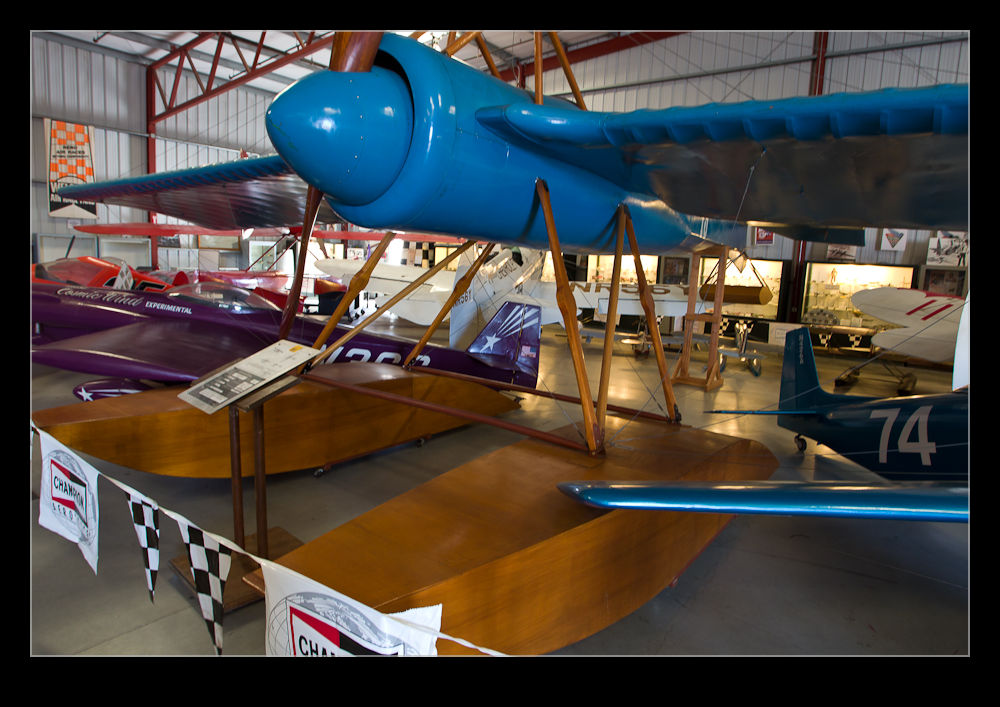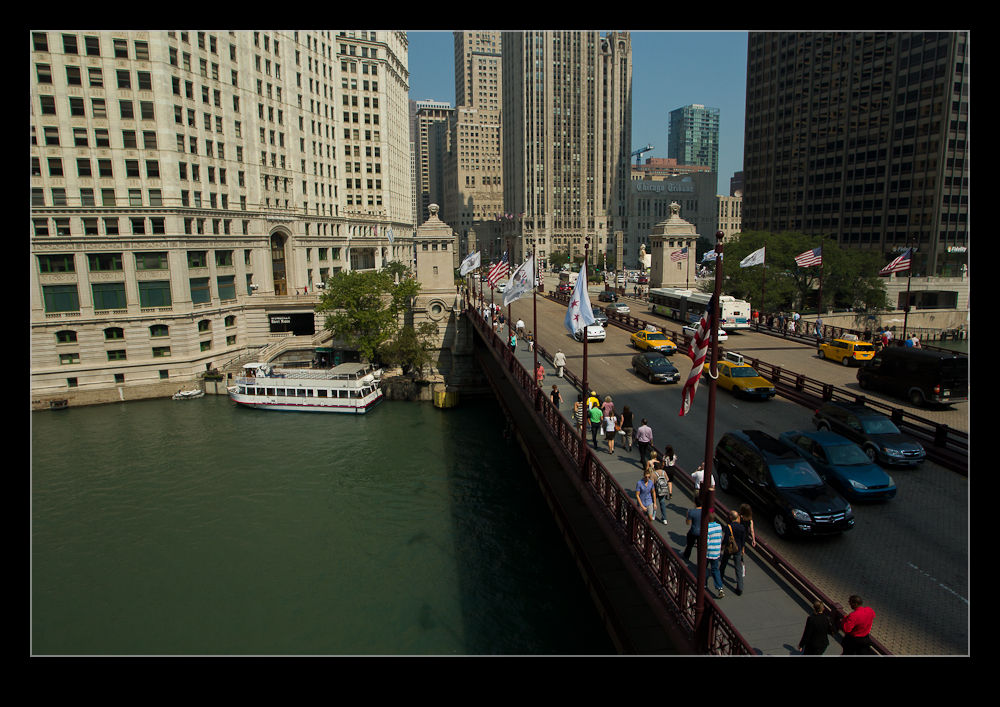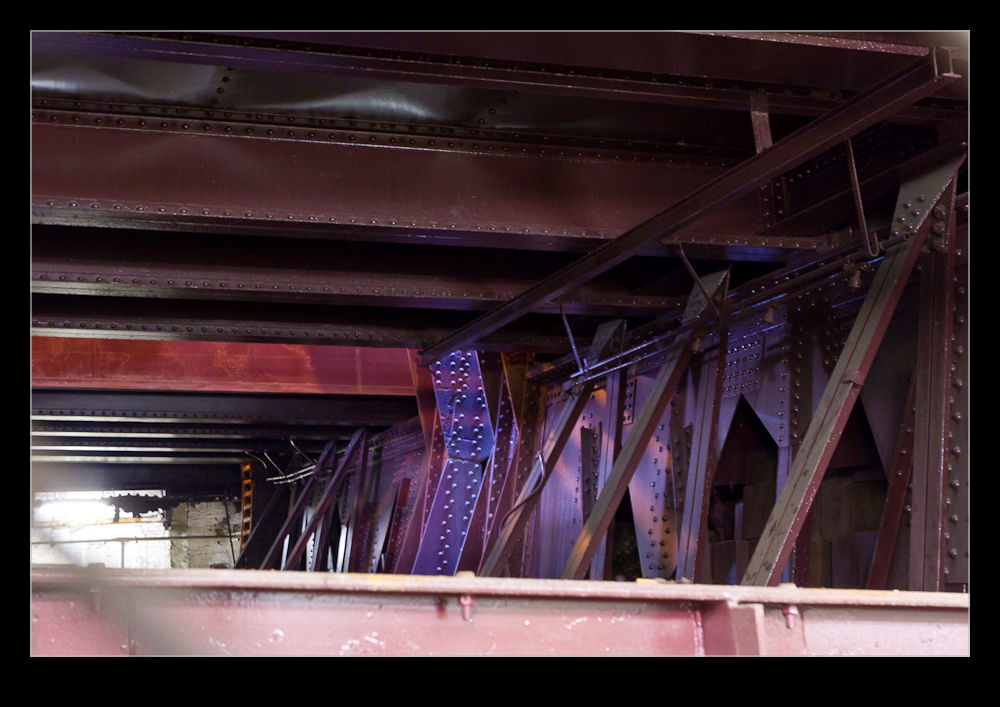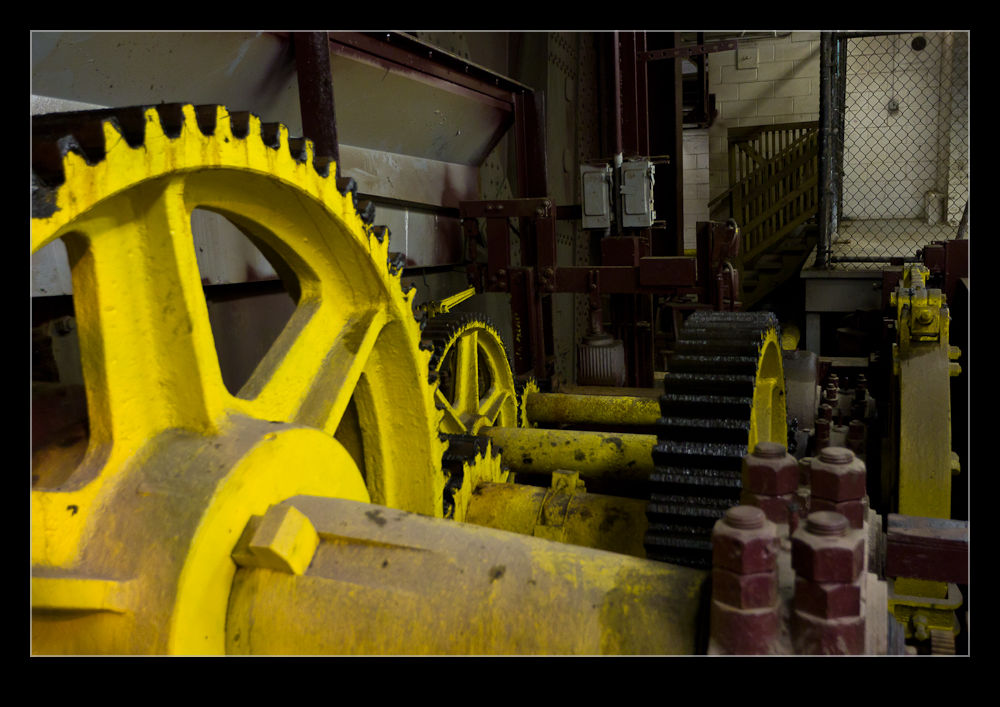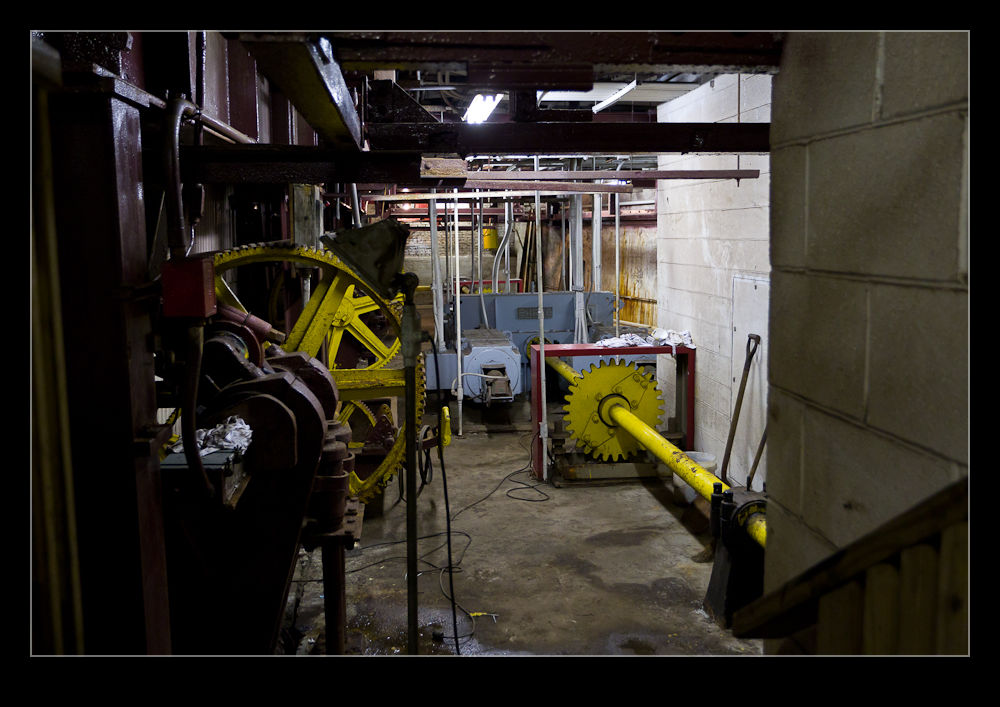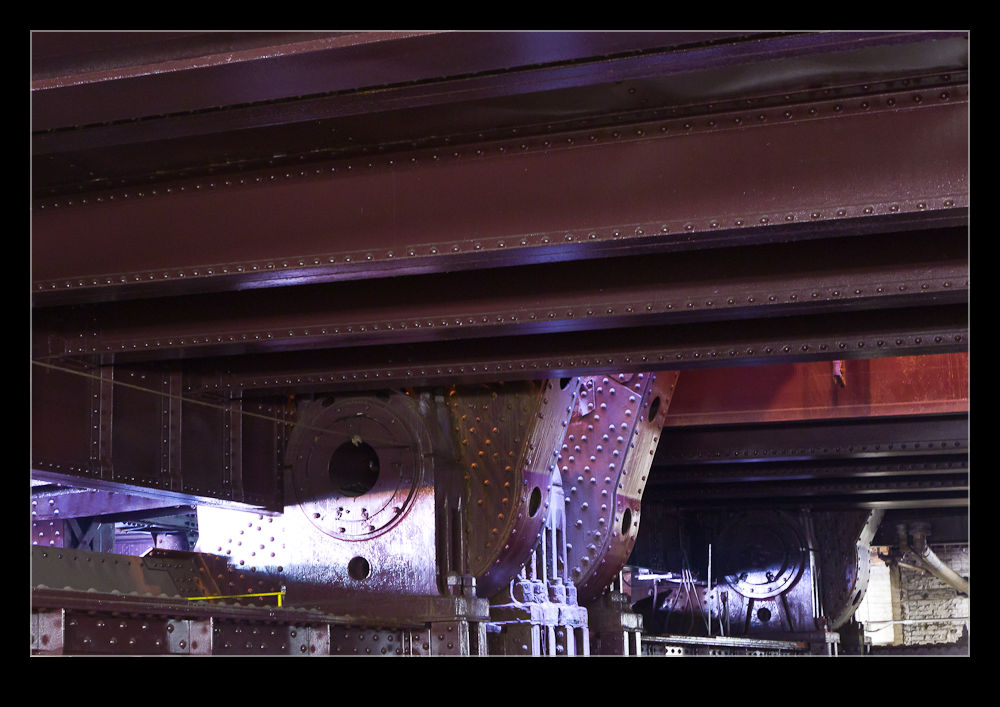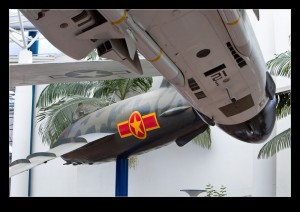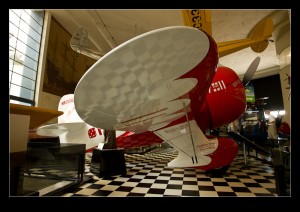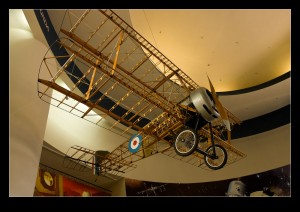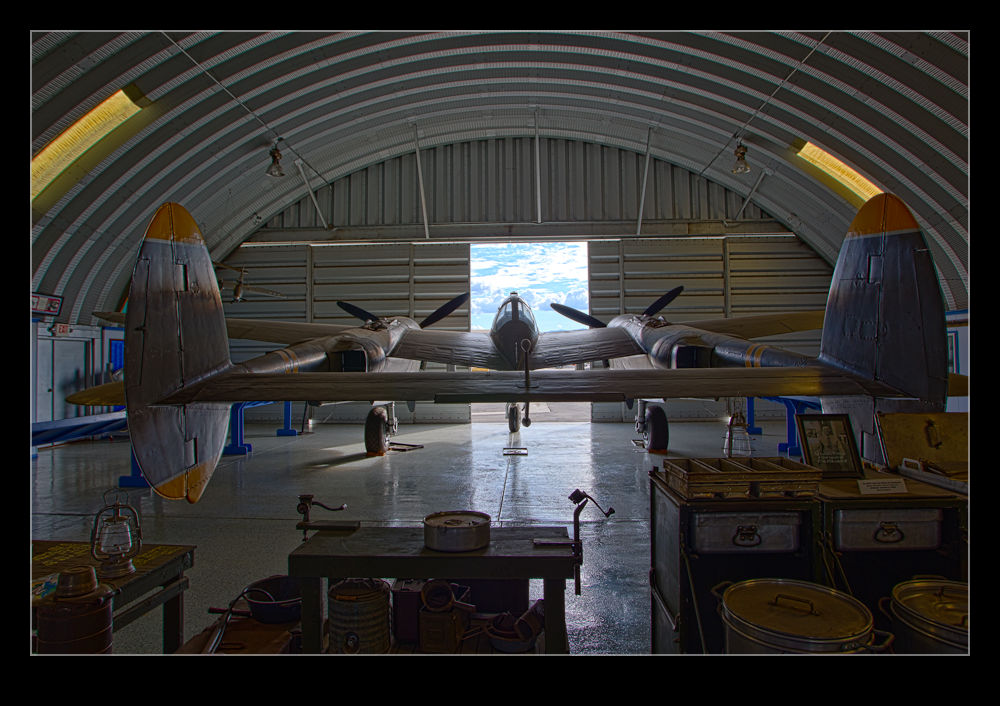 With a day to spare during my trip to Los Angeles, I wasn’t short of places to go that would satisfy the aviation fan within. One museum an hours drive from my hotel was on my list of places I really ought to have been to already. That was Chino’s Planes of Fame museum. With a better forecast than for the previous day in store, I made an early start.
With a day to spare during my trip to Los Angeles, I wasn’t short of places to go that would satisfy the aviation fan within. One museum an hours drive from my hotel was on my list of places I really ought to have been to already. That was Chino’s Planes of Fame museum. With a better forecast than for the previous day in store, I made an early start.
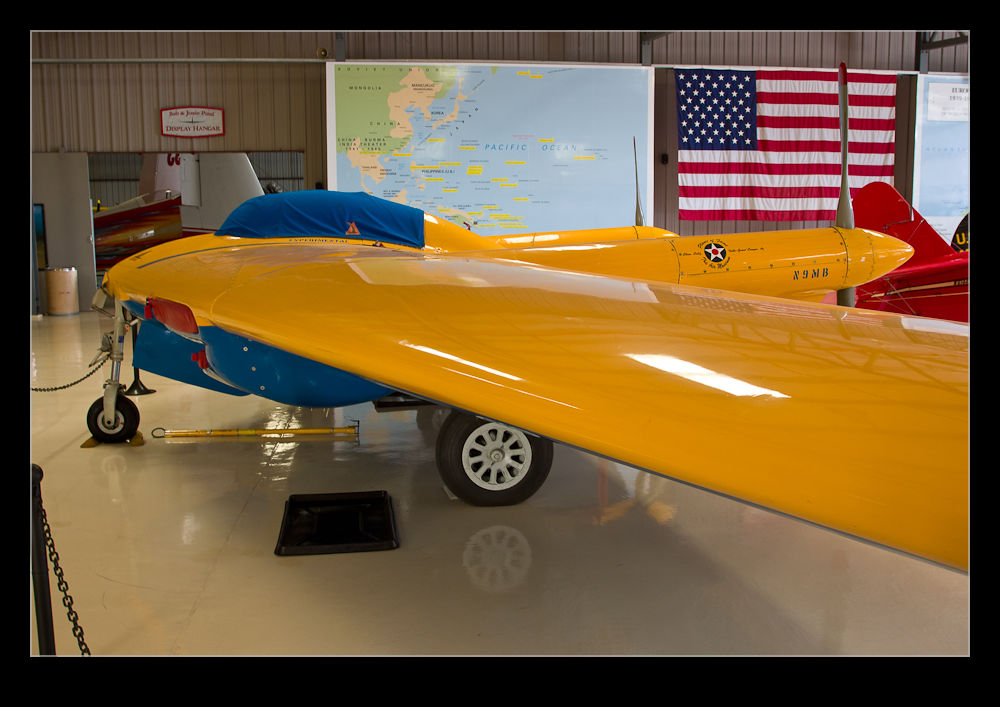
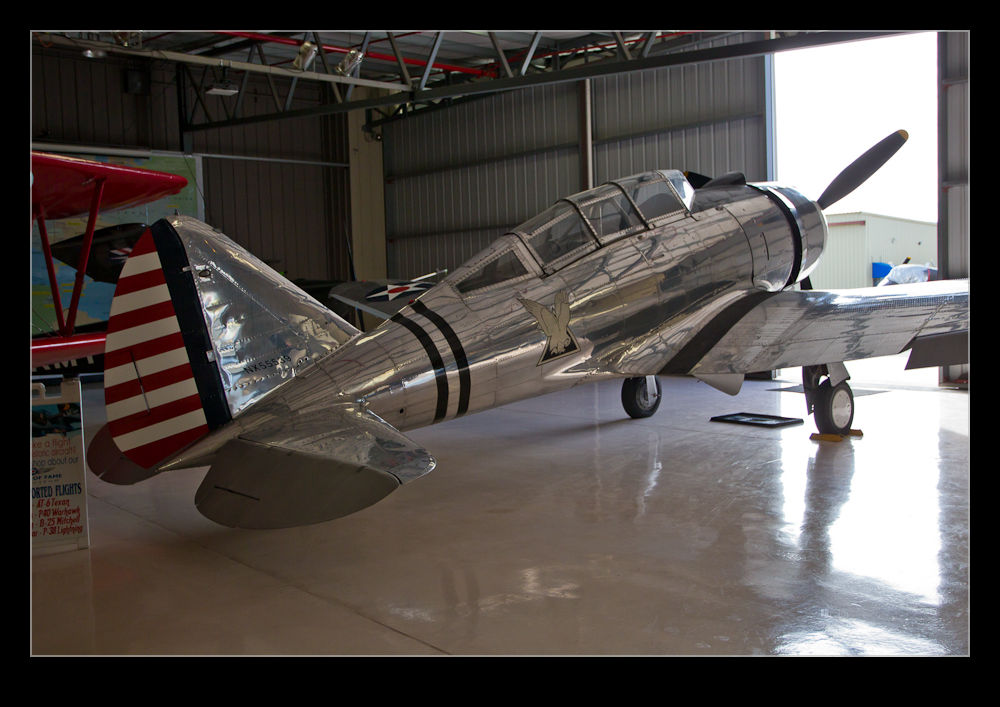 The museum opened at 10am on Sunday’s and the drive was supposed to be an hour so I planned to arrive just as it opened. Traffic was playing ball and I did indeed get there just after the doors had opened. There were three cars in the parking lot. Mine, the person running the shop and one of the volunteers, Stephen Andridge, who arrived at the same time that I did. For the time-being, the museum was going to be mine.
The museum opened at 10am on Sunday’s and the drive was supposed to be an hour so I planned to arrive just as it opened. Traffic was playing ball and I did indeed get there just after the doors had opened. There were three cars in the parking lot. Mine, the person running the shop and one of the volunteers, Stephen Andridge, who arrived at the same time that I did. For the time-being, the museum was going to be mine.
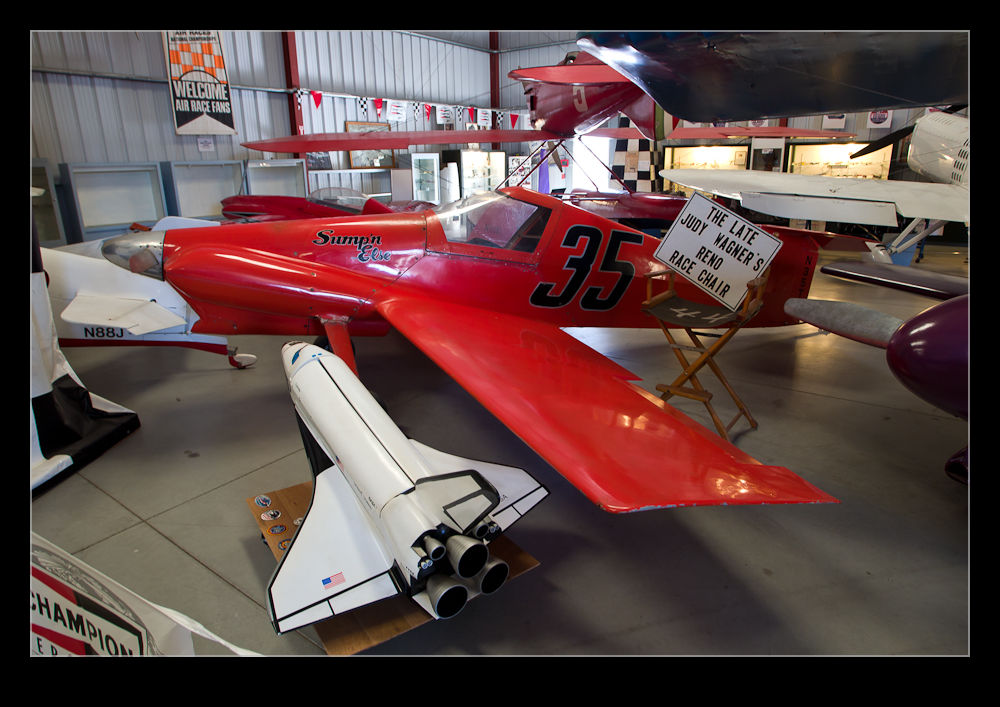
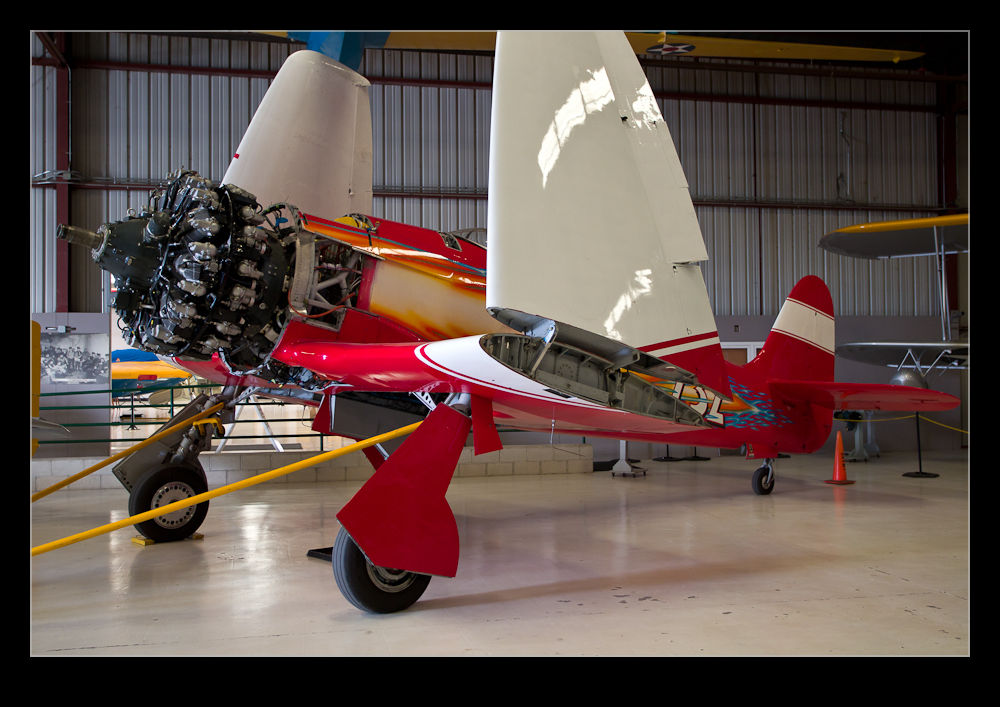 Stephen said hello when I came into the shop and, since he didn’t have a tour booked until later in the day, he offered to wander around with me and show me the collection. This worked out very well for me. I could effectively do two tours of the facility. The first with Stephen would show me the sum of everything that was on site. The second would allow me to go back around with the camera and take the shots of the things that had caught my attention the first time.
Stephen said hello when I came into the shop and, since he didn’t have a tour booked until later in the day, he offered to wander around with me and show me the collection. This worked out very well for me. I could effectively do two tours of the facility. The first with Stephen would show me the sum of everything that was on site. The second would allow me to go back around with the camera and take the shots of the things that had caught my attention the first time.
 Stephen and I ended up taking a long time as we went around the museum. There is plenty to see and we had a lot to talk about as we went around. We had nearly finished everything when he realized that the time was up for him to go and take his tour around. I have no idea where the time went to but I am certainly grateful to him for being such a great host.
Stephen and I ended up taking a long time as we went around the museum. There is plenty to see and we had a lot to talk about as we went around. We had nearly finished everything when he realized that the time was up for him to go and take his tour around. I have no idea where the time went to but I am certainly grateful to him for being such a great host.

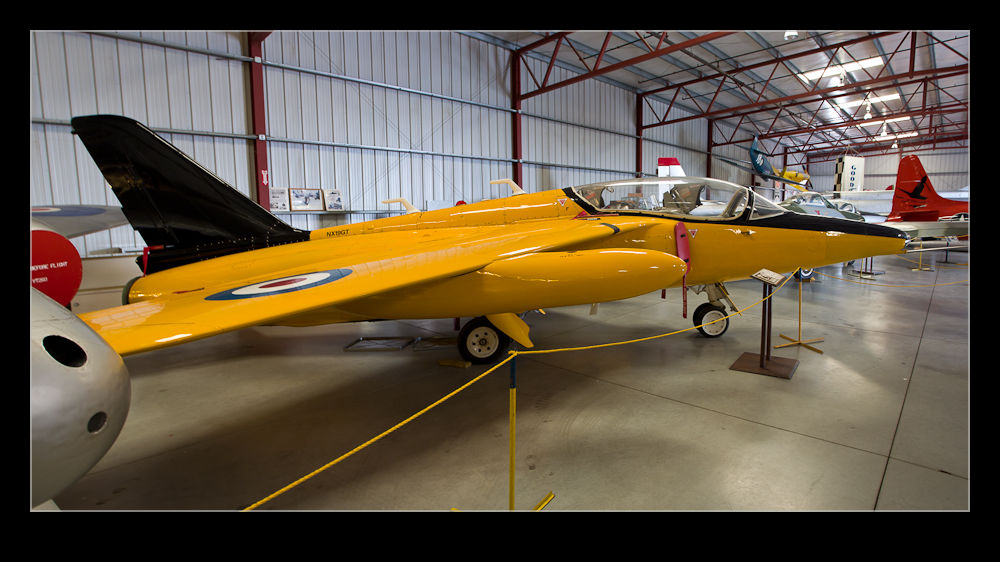 The collection is certainly very varied. There are a range of vintage aircraft from the US with a lot of second world war aircraft as well as jets. However, other countries are well represented. There are a few old British aircraft that caught my eye as well as some rare Japanese aircraft. They also have a FW-190 built using components from a supplier in Germany. A Buchon is also undergoing restoration. I prefer 109s to have the original BMW engine but Buchons are still great to see.
The collection is certainly very varied. There are a range of vintage aircraft from the US with a lot of second world war aircraft as well as jets. However, other countries are well represented. There are a few old British aircraft that caught my eye as well as some rare Japanese aircraft. They also have a FW-190 built using components from a supplier in Germany. A Buchon is also undergoing restoration. I prefer 109s to have the original BMW engine but Buchons are still great to see.
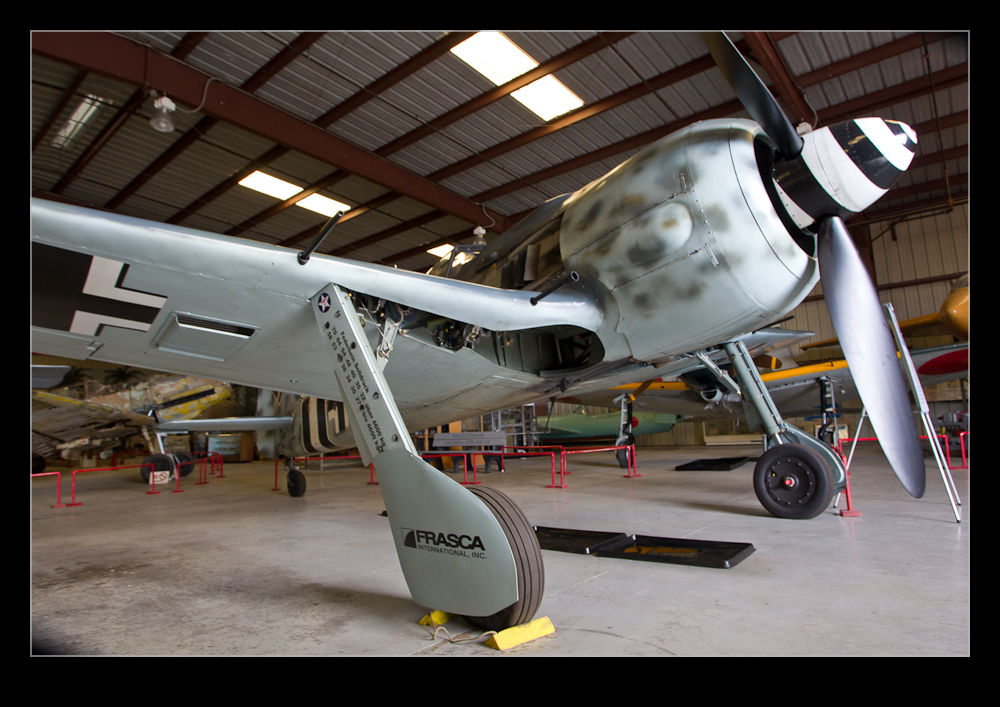 There are other interesting bits in the collection. An original Bell P-59 Airacomet is undergoing restoration, possibly to fly. While it is historic as America’s first jet fighter, everything I have read about it says it was a pretty useless fighter. However, its place in history is important. Also in the hangar is the fake propeller that was mounted to its nose to disguise its, then secret, technology.
There are other interesting bits in the collection. An original Bell P-59 Airacomet is undergoing restoration, possibly to fly. While it is historic as America’s first jet fighter, everything I have read about it says it was a pretty useless fighter. However, its place in history is important. Also in the hangar is the fake propeller that was mounted to its nose to disguise its, then secret, technology.
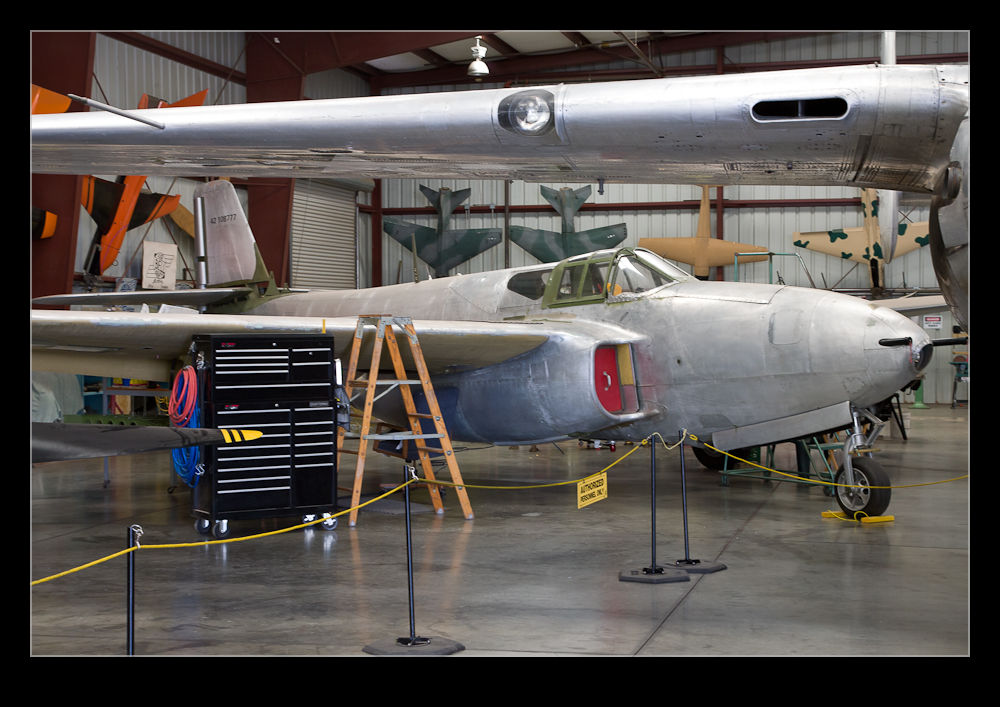
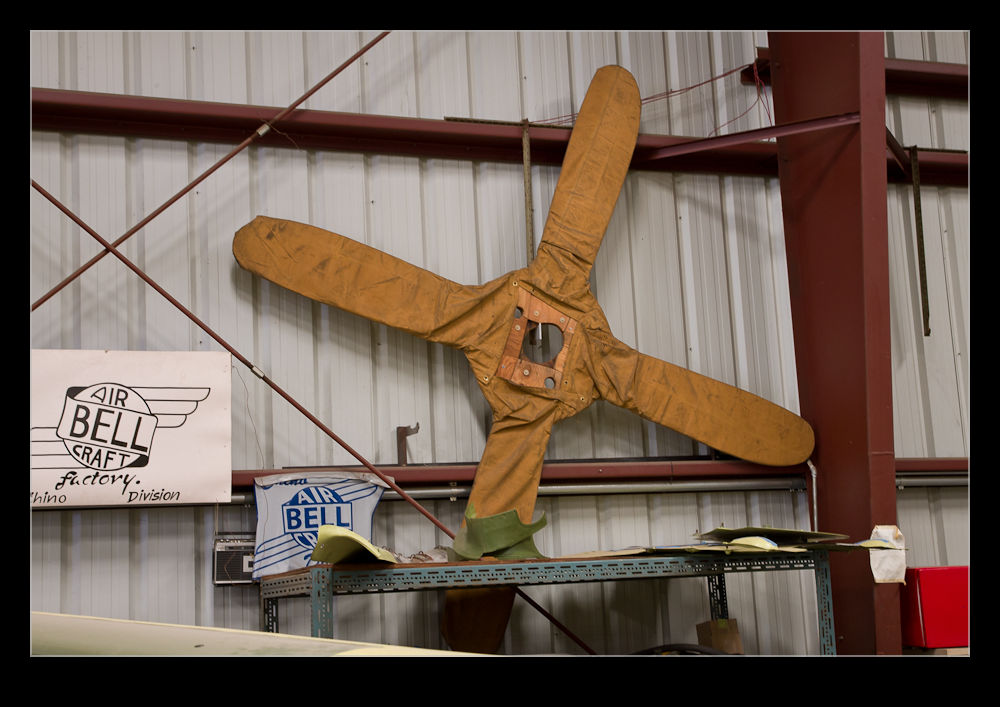 Most of the aircraft in the hangars are in great condition. However, one airframe is a wreck that was brought back from the jungle. I was impressed that, in this case, they chose to display it as it crashed. The layout with scenery around it and the airframe on the ground is pretty impressive and a great reminder of how so many aircraft actually ended up in those days.
Most of the aircraft in the hangars are in great condition. However, one airframe is a wreck that was brought back from the jungle. I was impressed that, in this case, they chose to display it as it crashed. The layout with scenery around it and the airframe on the ground is pretty impressive and a great reminder of how so many aircraft actually ended up in those days.
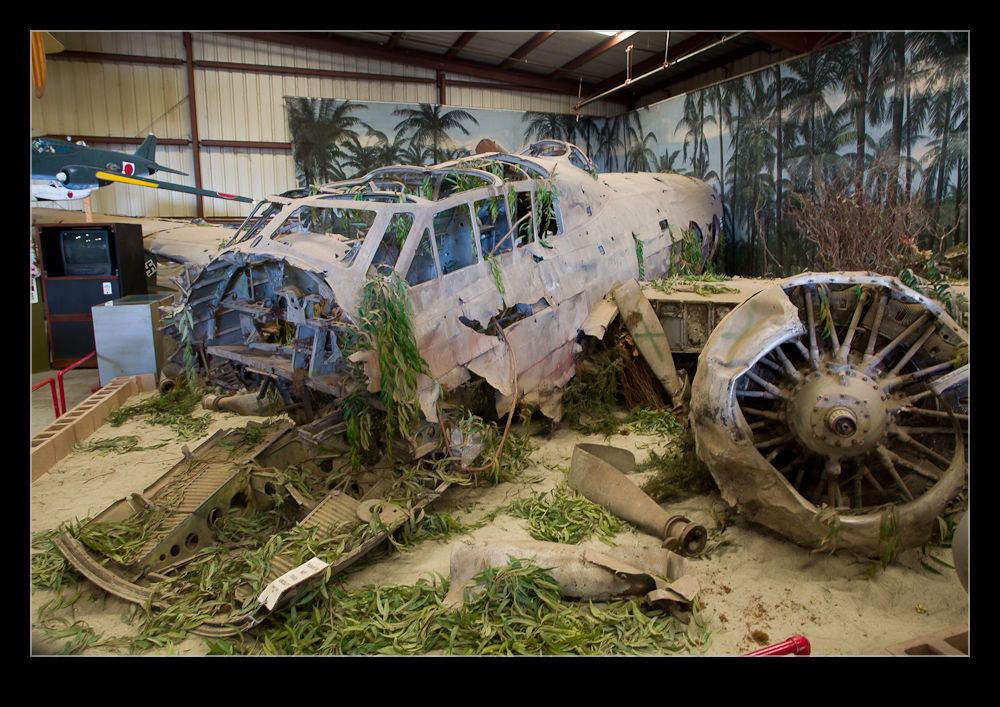 There are some very significant aircraft also on display. One that caught my interest was the Douglas Skyrocket. One of the three airframes built is on display. A major part of the race to expand the speed envelope, the Skyrocket is often overlooked against the Bell X-1 series but it was the first aircraft to exceed Mach 2. I didn’t find out exactly what this particular airframe had done in the program but that hardly really matters compared to it being there at all.
There are some very significant aircraft also on display. One that caught my interest was the Douglas Skyrocket. One of the three airframes built is on display. A major part of the race to expand the speed envelope, the Skyrocket is often overlooked against the Bell X-1 series but it was the first aircraft to exceed Mach 2. I didn’t find out exactly what this particular airframe had done in the program but that hardly really matters compared to it being there at all.
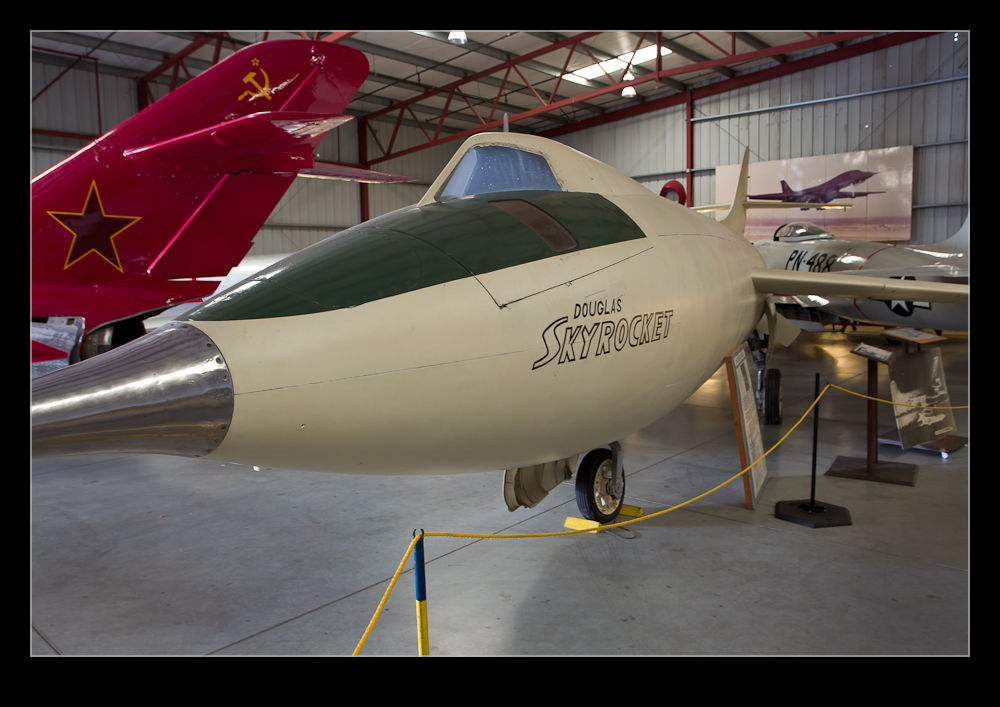 Aside from the display aircraft in the hangars, there is also a boneyard in the museum. This includes a variety of aircraft including some more modern jet fighters. An F-104 from Belgium, an A-7 and F-8 facing each other, a Sabre, a Super Sabre (once a target tug at China Lake and missing some pieces as a result of a close call!), a Fury plus a bunch of disassembled airframes in racks. There were some Russian jets as well although the airworthy examples were off in Las Vegas for the Nellis show.
Aside from the display aircraft in the hangars, there is also a boneyard in the museum. This includes a variety of aircraft including some more modern jet fighters. An F-104 from Belgium, an A-7 and F-8 facing each other, a Sabre, a Super Sabre (once a target tug at China Lake and missing some pieces as a result of a close call!), a Fury plus a bunch of disassembled airframes in racks. There were some Russian jets as well although the airworthy examples were off in Las Vegas for the Nellis show.
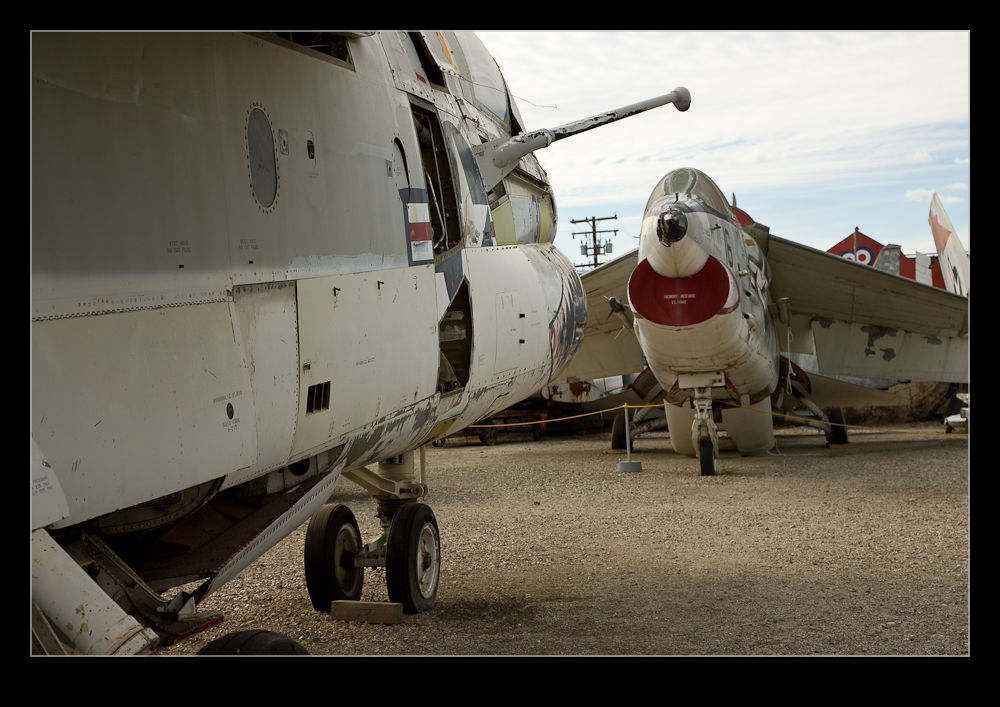
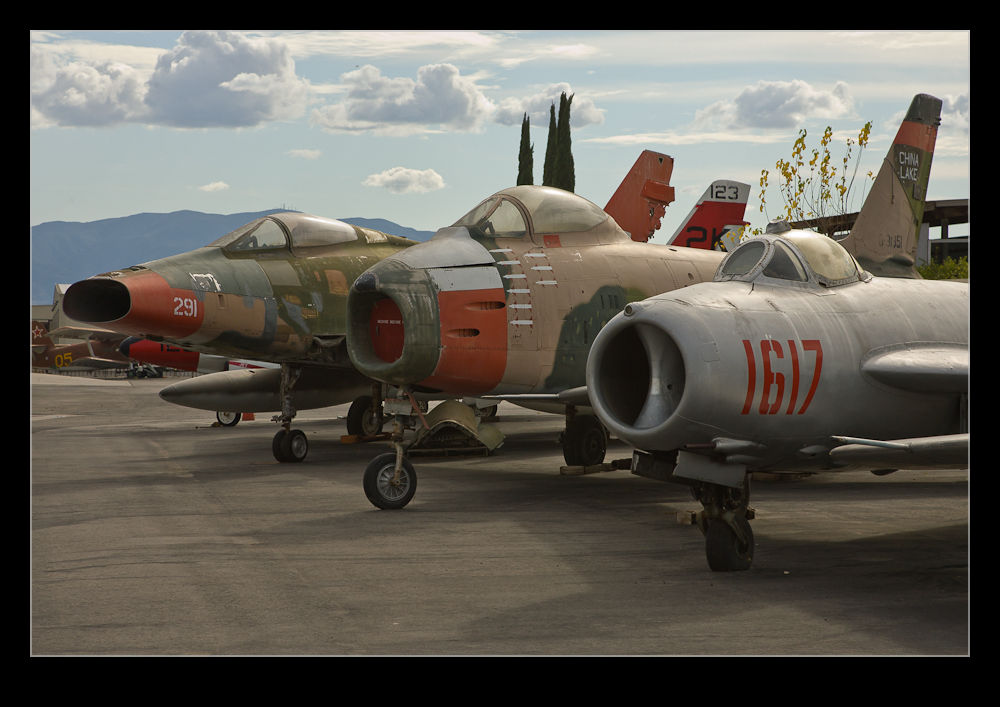 I have not even started to cover the collection here and there are plenty of other fascinating and noteworthy aircraft in the collection. I am not trying to provide a comprehensive overview. Instead, I hope I am providing enough temptation for you to consider a visit if ever you are nearby. If the ones I have mentioned are of interest, the rest of the collection will keep you happy for a day at least.
I have not even started to cover the collection here and there are plenty of other fascinating and noteworthy aircraft in the collection. I am not trying to provide a comprehensive overview. Instead, I hope I am providing enough temptation for you to consider a visit if ever you are nearby. If the ones I have mentioned are of interest, the rest of the collection will keep you happy for a day at least.
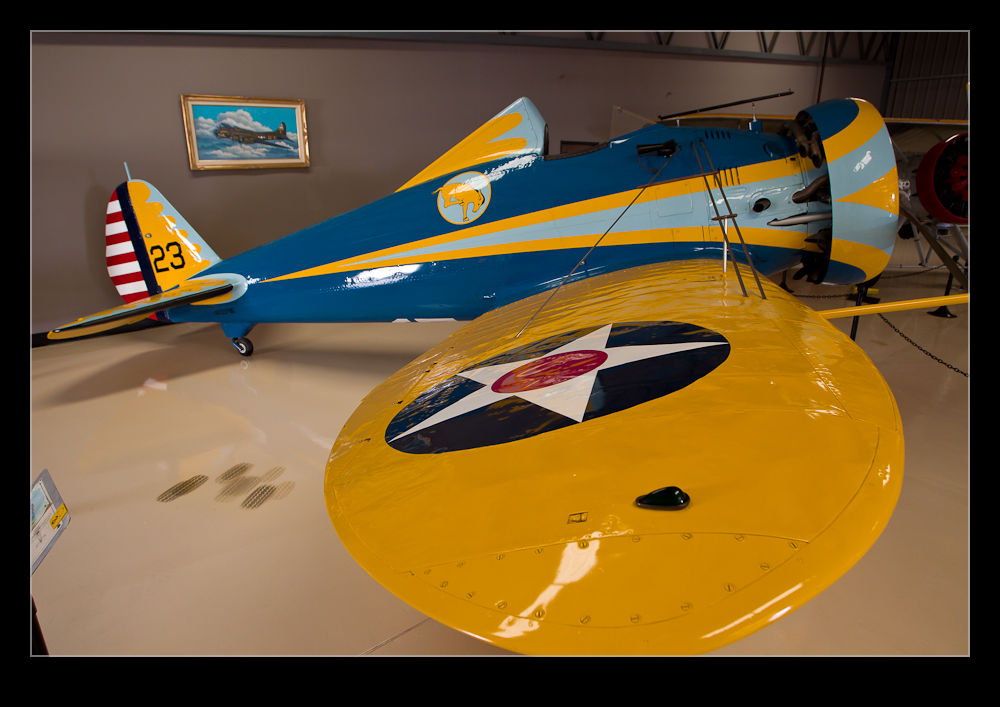 By the time I was done, a good chunk of the day had gone. I grabbed some late lunch at Flo’s across the field before heading back to the hotel. This had originally been part of my plan for the day but it was so enjoyable, it ended up being the whole day. I will be back, I am sure. I will definitely try and get to their annual show as well since that must be quite an event.
By the time I was done, a good chunk of the day had gone. I grabbed some late lunch at Flo’s across the field before heading back to the hotel. This had originally been part of my plan for the day but it was so enjoyable, it ended up being the whole day. I will be back, I am sure. I will definitely try and get to their annual show as well since that must be quite an event.
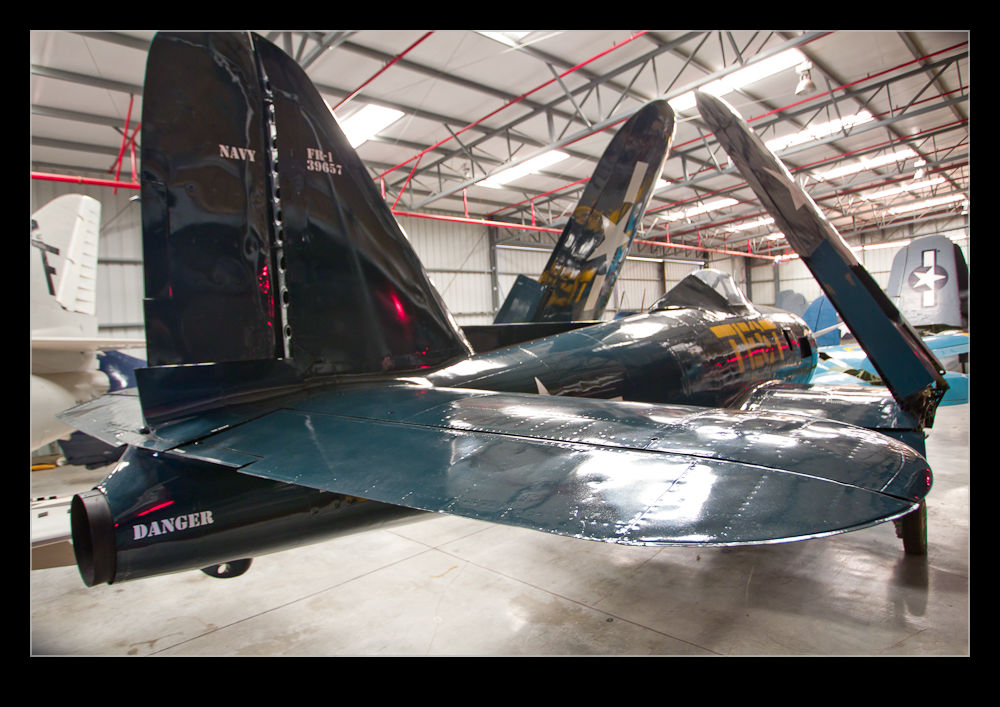 If you want to see more, go to the website at www.planesoffame.org.
If you want to see more, go to the website at www.planesoffame.org.
